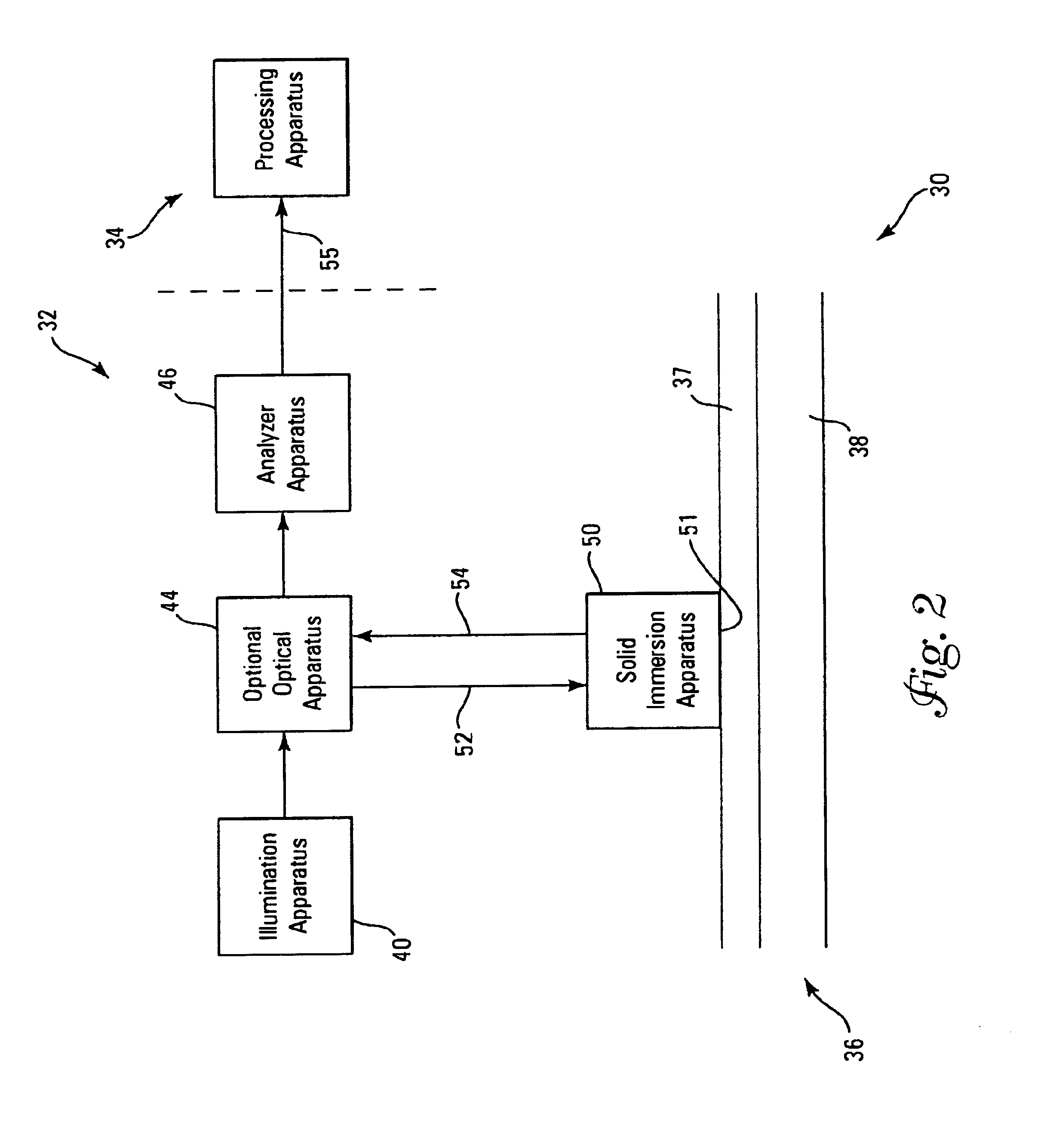Ellipsometry methods and apparatus using solid immersion tunneling
a technology of solid immersion tunneling and ellipsometry, which is applied in the field of ellipsometry, can solve the problems of insufficient thickness and refractive index of homogeneous films over a relatively large area, the shape of such sub-microns is too small, and the technique is extremely sensitive, etc., to achieve accurate measurement of the properties of thin films
- Summary
- Abstract
- Description
- Claims
- Application Information
AI Technical Summary
Benefits of technology
Problems solved by technology
Method used
Image
Examples
Embodiment Construction
[0036]Solid immersion tunneling ellipsometer methods and apparatus shall be described herein with reference to FIGS. 2-13. In the following detailed description of the embodiments, reference is made to the drawings that form a part thereof, and in which are shown by way of illustration specific embodiments in which the invention may be practiced. It is to be understood that other embodiments may be utilized, as structural or process changes may be made without departing from the scope of the present invention.
[0037]FIG. 2 shows a general illustration of a solid immersion tunneling ellipsometer system 30 operable for carrying out one or more ellipsometry methods according to the present invention with respect to a sample 36. The sample 36 includes a thin film 37 to be characterized provided on a substrate 38.
[0038]The solid immersion tunneling ellipsometer system 30 is operable to determine one or more characteristics of various thin films and / or structures. Examples of characteristi...
PUM
| Property | Measurement | Unit |
|---|---|---|
| thickness | aaaaa | aaaaa |
| angle | aaaaa | aaaaa |
| angle | aaaaa | aaaaa |
Abstract
Description
Claims
Application Information
 Login to View More
Login to View More - R&D
- Intellectual Property
- Life Sciences
- Materials
- Tech Scout
- Unparalleled Data Quality
- Higher Quality Content
- 60% Fewer Hallucinations
Browse by: Latest US Patents, China's latest patents, Technical Efficacy Thesaurus, Application Domain, Technology Topic, Popular Technical Reports.
© 2025 PatSnap. All rights reserved.Legal|Privacy policy|Modern Slavery Act Transparency Statement|Sitemap|About US| Contact US: help@patsnap.com



